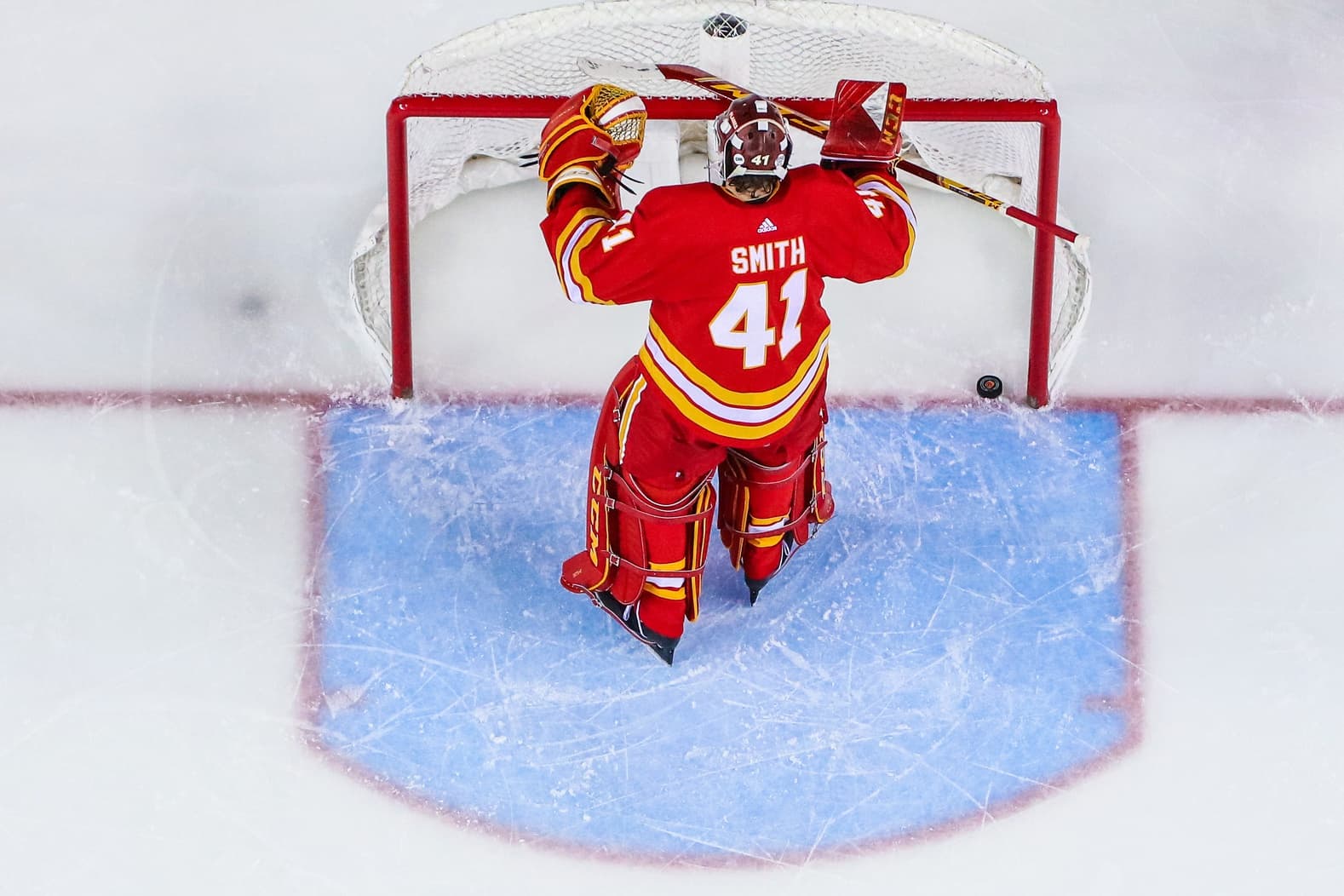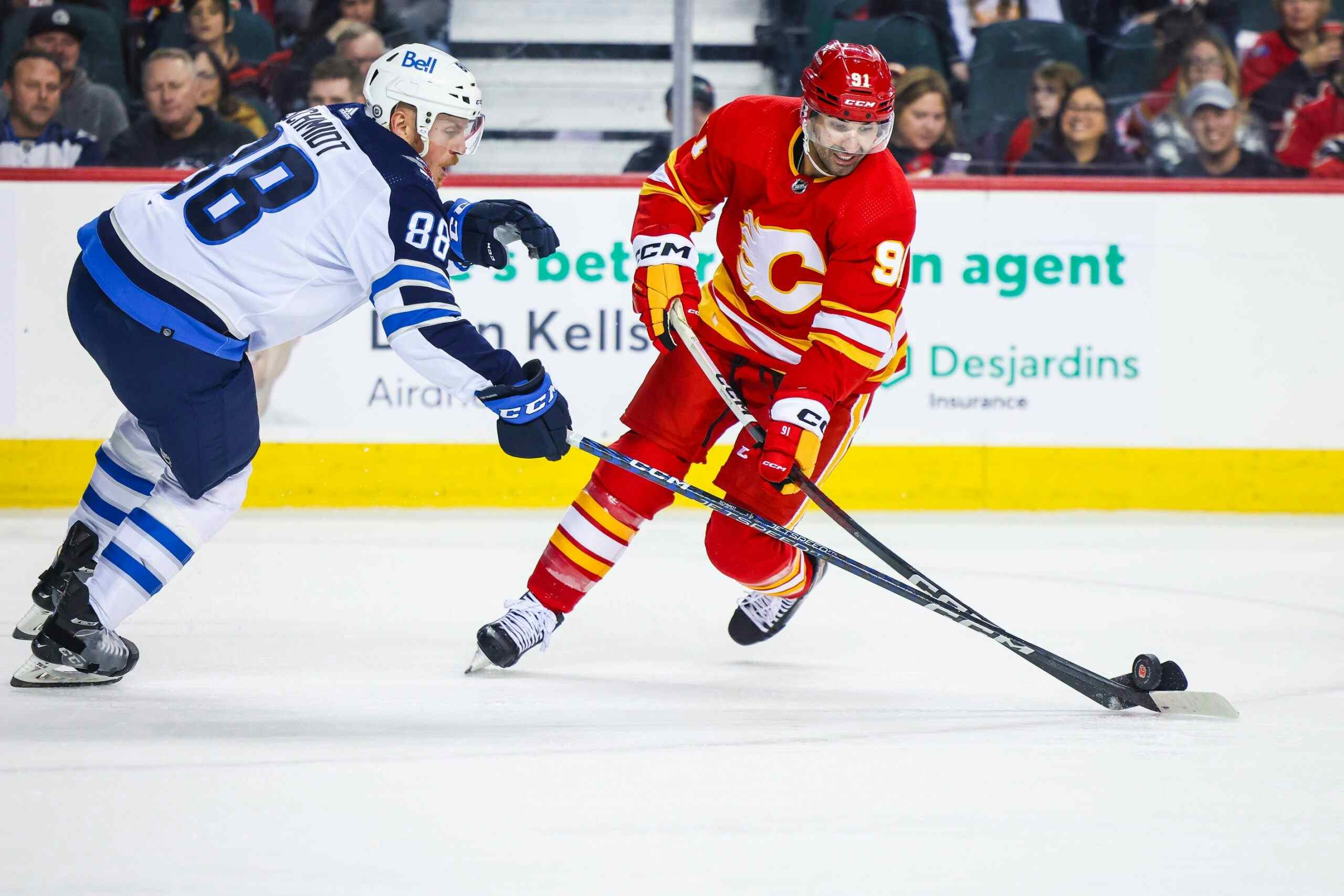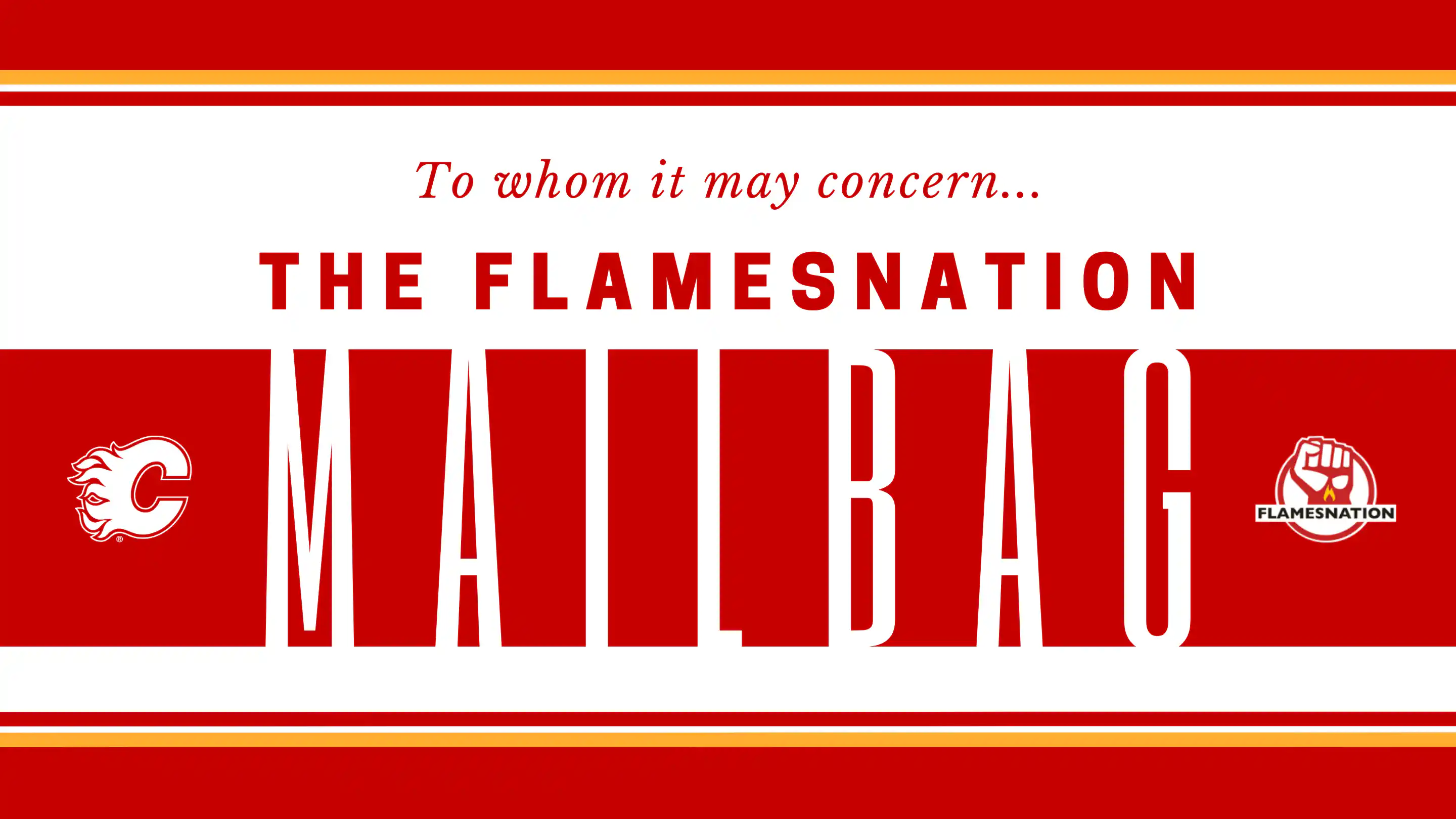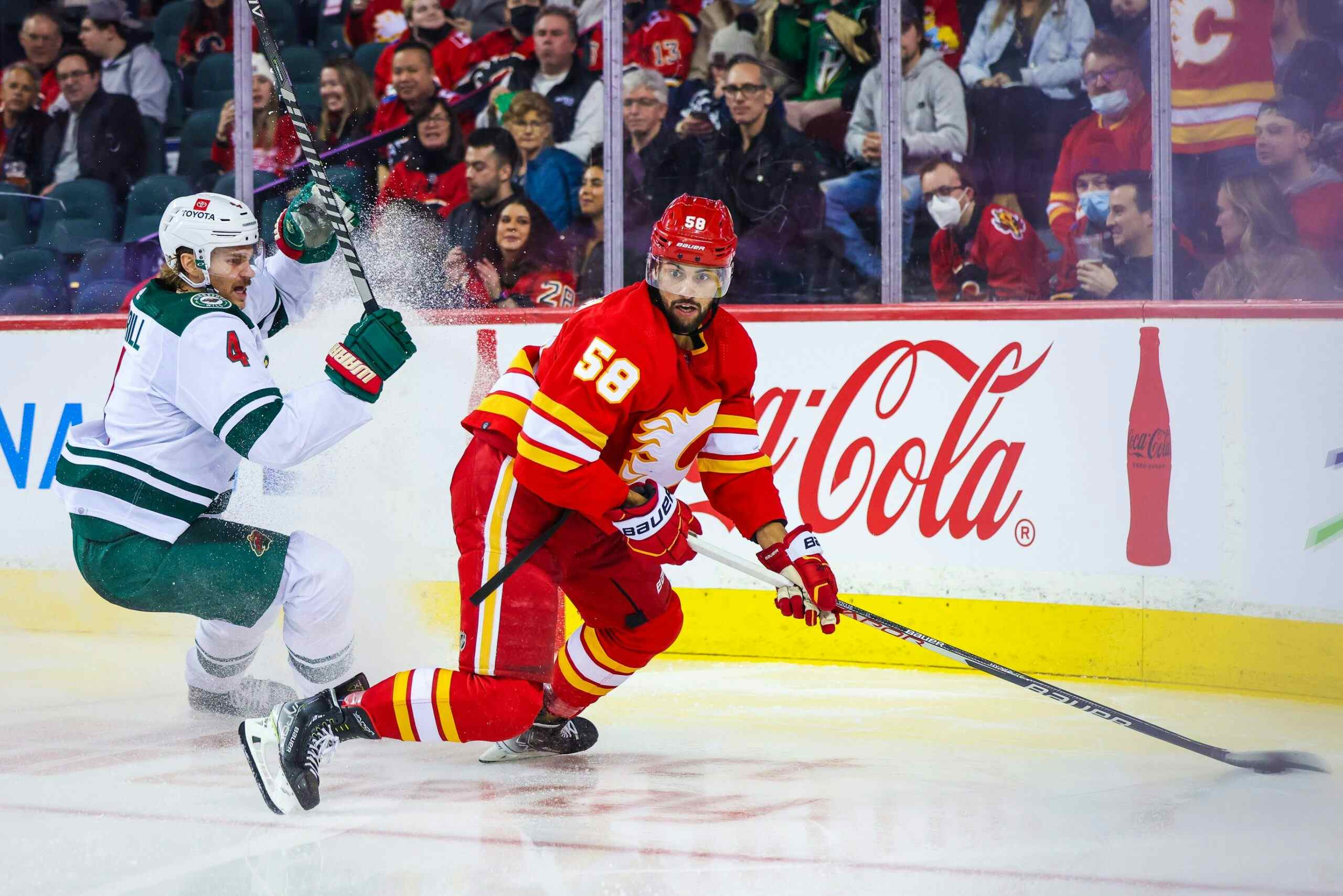Five realistic backup goaltending upgrades

I’ll ask a question to begin: how confident would you be as a Flames fan if they had to turn to Mike Smith in the playoffs? If your answer is “not very” like mine, you’re probably on the same page in believing Calgary needs to be exploring an upgrade on their second goaltender. While we could throw around all kinds of names, I’ve come up with five realistic targets for the Flames prior to the trade deadline.
Consider the fact four of the last five Stanley Cup winners have used two goaltenders in their playoff runs, either by choice or necessity. Sometimes injuries happen and sometimes a change is required, even if it’s temporary. Having two goaltenders you can trust has become increasingly more crucial for postseason success. With David Rittich, the Flames have one, but Smith hasn’t held up his end of the bargain thus far.
The potential upgrades listed below all meet a certain criteria. They’re either on expiring contracts or deals with one additional year remaining and, most importantly, they’d be clear upgrades on what Calgary has gotten from Smith this year. The asking prices vary, but this is at least a decent starting point for the discussion.
ROBIN LEHNER
| Season | Team | GP | SV% |
| 2016-17 | Buffalo | 59 | 0.920 |
| 2017-18 | Buffalo | 53 | 0.908 |
| 2018-19 | New York Islanders | 22 | 0.926 |
All things being equal, Lehner is the most attractive option for numerous reasons. First and foremost, with a 0.916 career save percentage over 241 games, we’re talking about a very consistent goaltender. Even based on this season with the Islanders, Lehner would be a clear upgrade on Smith and would solidify the team’s tandem, at least until the end of the season.
Lehner brings additional elements, too. At 27, he’s still relatively young by goaltending standards, which means the opportunity to keep him in the fold beyond this season exists. Lehner is a pending unrestricted free agent come July, so Calgary would have the opportunity to negotiate with him when the season comes to an end.
There are two sticking points, though: asking price and situation. Knowing how well Lehner has played, he’d likely demand the highest price on this list to bring in via trade. On top of that, there’s no telling whether New York would even be willing to deal him. The Islanders are in the teeth of a playoff race right now; if they’re in that same spot in late February, the chances they deal Lehner are low.
THOMAS GREISS
| Season | Team | GP | SV% |
| 2016-17 | New York Islanders | 51 | 0.913 |
| 2017-18 | New York Islanders | 27 | 0.892 |
| 2018-19 | New York Islanders | 24 | 0.914 |
Lehner’s teammate with the Islanders falls under the same umbrella: if the team is fighting for a playoff spot, it’s doubtful they’d be moving either one of their tenders. If they are willing to deal one, though, I wonder if Greiss might be more likely to move. Greiss is five years older and his career numbers aren’t as impressive as Lehner’s, which would pose an interesting decision for New York.
Greiss would definitely be a solid fit for the Flames. He’s got one year left on a deal that carries a $3.33 million cap hit, so Greiss is relatively affordable and provides cost certainty for next season. Plus, his 0.913 career save percentage and work this season suggest he’d give Calgary a better option than what we’ve seen from Smith to date.
JIMMY HOWARD
| Season | Team | GP | SV% |
| 2016-17 | Detroit | 26 | 0.927 |
| 2017-18 | Detroit | 60 | 0.910 |
| 2018-19 | Detroit | 30 | 0.916 |
Of all the goalies listed, Howard’s average annual value is the highest at a very precise $5,291,666 until the end of the season. Knowing Calgary’s cap crunch, the Red Wings would likely have to eat some salary if the two sides were going to make a trade work. There are rumblings Detroit is interested in re-signing Howard, but it would shock few if he were on the move prior to the deadline.
It took some time for Howard to solidify a full-time spot in the NHL, but he’s been an extremely consistent, if not outstanding, goaltender over the last decade. With a 0.913 career save percentage, Howard has been effective throughout his career and has yet to have a truly poor season. On a bad Red Wings team this year, he’s been one of the few bright spots.
At 34, Howard sure does feel like a rental target for a team like the Flames. There’s nothing wrong with that, providing the price is right, which is an unknown in Howard’s case. Reports have suggested Detroit is looking for a big return, which could price Calgary out of the market.
CURTIS MCELHINNEY
| Season | Team | GP | SV% |
| 2016-17 | Toronto | 14 | 0.914 |
| 2017-18 | Toronto | 18 | 0.934 |
| 2018-19 | Carolina | 17 | 0.921 |
As nice as it would be to see McElhinney come full circle and rejoin the team that drafted him 17 years later, there’s even more incentive to target Carolina’s veteran goalie. Taken in the sixth round by the Flames in 2002, McElhinney has proven to be one of the league’s best backups over the last half decade and is probably the most realistic target for the team prior to the deadline.
McElhinney is a pending UFA and carries a very affordable $850,000 cap hit. I’m not suggesting the Hurricanes would let him walk for a song, but I can’t see their asking price being sky high. And, despite a nice run of late, there’s a realistic chance Carolina will be out of the playoff picture come late February, which means they’d likely be willing to deal a 35-year-old backup. There’s a lot that suggests McElhinney might be Calgary’s best bet.
DARCY KUEMPER
| Season | Team | GP | SV% |
| 2016-17 | Minnesota | 18 | 0.902 |
| 2017-18 | Los Angeles/Arizona | 29 | 0.919 |
| 2018-19 | Arizona | 21 | 0.914 |
We can be quite certain the Coyotes won’t be in playoff contention come the trade deadline. Now, that doesn’t mean they’ll be eager to trade Kuemper, but it makes the possibility a whole lot more likely. At 28, Kuemper could be a tandem option with Rittich going forward and his $1.85 million cap hit is very palatable for one more season.
On the ice, Kuemper has proven to be solid in limited work. While there have been dips, a career 0.913 save percentage in 152 games is right in the wheelhouse the Flames would be looking at. He’s had a nice year on a struggling Arizona team and likely wouldn’t cost an arm and a leg to acquire.
CONCLUSION
Unless Smith engineers a significant turnaround in his game over the next six weeks, it’s hard to believe Calgary would be comfortable with him as one of their two goaltenders heading into the playoffs. The Flames are in a position to go on a long run for the first time in ages, which is why I don’t think they can blindly hope Rittich stays healthy without a viable contingency plan.
Of course, this all starts another conversation about what the team would do with Smith. They could have him be part of a deal for another goalie, which would help money work and could be realistic if an asset goes the other way. Calgary could put Smith on waivers with the intent of sending him to the AHL. Or they could roll with three goaltenders knowing there is no roster limit after the trade deadline.
Making a trade for another goalie might call for a little creativity from general manager Brad Treliving, knowing the team’s cap crunch and unique situation with a struggling 36-year-old backup. But if the Flames aren’t at the very least exploring other options, they’re doing themselves a disservice.
Recent articles from Pat Steinberg





